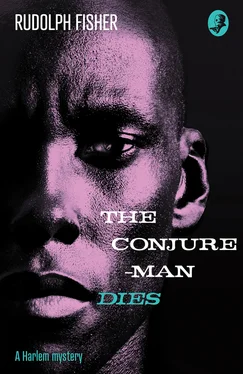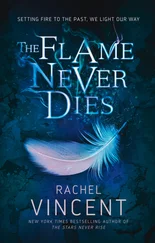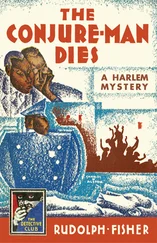The classical mysteries written under these conditions were essentially puzzles where the reader was invited to unearth the murderer before the author did so. Their structures were as rigid as those of a Japanese no play, their characters one-dimensional, their styles generally florid, representative of the snob’s idea of Good Writing. A rereading of S. S. Van Dine, most successful mystery writer of that time, will be enlightening to anyone questioning what might seem excessively harsh judgments in the foregoing.
Luckily, in 1930, there crept into this WASP paradise of genteel murder a serpent named Dashiell Hammett. With a background as Pinkerton investigator and pulp writer, with a superb talent for fiction and a highly-developed social conscience, he plucked the apple right out of the tree that year with his his publication of The Maltese Falcon. Suddenly, murder in the mystery novel showed some of the forms it had already demonstrated in such outstanding pulp magazines as Black Mask and Flynn’s . Suddenly it was booted right out of the vicar’s garden and into the gutter, a much more likely setting for it. There was a hard-edged realism to Hammett’s characters and events, a comprehension of the meanness and viciousness of the urban world they inhabited. And his prose, clipped, economical, earthy, broke completely with the sort of overblown style favoured by S. S. Van Dine and his confreres.
It is highly probable that Rudolph Fisher, intrigued by the idea of presenting Harlem, from top to bottom, in a mystery novel that could reach a larger audience than a straight novel, devoted himself to some serious study of what made the books of both Hammett and S. S. Van Dine tick, since both their approaches are clearly evident in The Conjure-Man Dies. Fisher’s extremely complex plotting and his occasionally too-pedantic writing of descriptive and expository passages is in the classical mode. But the characters, their broad range of background, and the handling of dialogue are wholly of Hammett’s realistic school.
Overall, it is clear that Fisher’s own sympathies and interests lie with Hammett, much as he deferred to traditional techniques. Stylistically, if one judges by the descriptive and expository writing in his novel, The Walls of Jericho, it is possible that he was not so much deferring to what he thought the mystery reader demanded as reflecting a background of pre-World War I reading. Every writer is strongly influenced by the reading he most enjoyed in his teens. It is the exceptional writer who, like Fisher, can dispense with its influence even in part.
In either case, there is no question that it is Fisher’s adherence to the new realism which, as in Hammett’s works, invests The Conjure-Man Dies with the qualities of a social document recording a time and a place without seeming to. One is drawn through the book by its story, but emerges at last with much more than that story in mind.
In the end, of course, it is the book itself that must speak for its author. And what one can best do in introducing a book so happily rediscovered after decades of obscurity is only to mark its place in history, and then step aside.
STANLEY ELLIN
New York
This book was first published in New York in 1932 and reflects the society of that time, including racist language that would be considered offensive if used today. It is presented here in full for the sake of historical accuracy.
ENCOUNTERING the bright-lighted gaiety of Harlem’s Seventh Avenue, the frigid midwinter night seemed to relent a little. She had given Battery Park a chill stare and she would undoubtedly freeze the Bronx. But here in this mid-realm of rhythm and laughter she seemed to grow warmer and friendlier, observing, perhaps, that those who dwelt here were mysteriously dark like herself.
Of this favour the Avenue promptly took advantage. Sidewalks barren throughout the cold white day now sprouted life like fields in spring. Along swung boys in camels’ hair beside girls in bunny and muskrat; broad, flat heels clacked, high narrow ones clicked, reluctantly leaving the disgorging theatres or eagerly seeking the voracious dance halls. There was loud jest and louder laughter and the frequent uplifting of merry voices in the moment’s most popular song:
‘I’ll be glad when you’re dead, you rascal you,
I’ll be glad when you’re dead, you rascal you.
What is it that you’ve got
Makes my wife think you so hot?
Oh you dog—I’ll be glad when you’re gone!’
But all of black Harlem was not thus gay and bright. Any number of dark, chill, silent side streets declined the relenting night’s favour. 130th Street, for example, east of Lenox Avenue, was at this moment cold, still, and narrowly forbidding; one glanced down this block and was glad one’s destination lay elsewhere. Its concentrated gloom was only intensified by an occasional spangle of electric light, splashed ineffectually against the blackness, or by the unearthly pallor of the sky, into which a wall of dwellings rose to hide the moon.
Among the houses in this looming row, one reared a little taller and gaunter than its fellows, so that the others appeared to shrink from it and huddle together in the shadow on either side. The basement of this house was quite black; its first floor, high above the sidewalk and approached by a long greystone stoop, was only dimly lighted; its second floor was lighted more dimly still, while the third, which was the top, was vacantly dark again like the basement. About the place hovered an oppressive silence, as if those who entered here were warned beforehand not to speak above a whisper. There was, like a footnote, in one of the two first-floor windows to the left of the entrance a black-on-white sign reading:
SAMUEL CROUCH, UNDERTAKER.
On the narrow panel to the right of the doorway the silver letters of another sign obscurely glittered on an onyx background:
N. FRIMBO, PSYCHIST.
Between the two signs receded the high, narrow vestibule, terminating in a pair of tall glass-panelled doors. Glass curtains, tightly stretched in vertical folds, dimmed the already too-subdued illumination beyond.
It was about an hour before midnight that one of the doors rattled and flew open, revealing the bareheaded, short, round figure of a young man who manifestly was profoundly agitated and in a great hurry. Without closing the door behind him, he rushed down the stairs, sped straight across the street, and in a moment was frantically pushing the bell of the dwelling directly opposite. A tall, slender, light-skinned man of obviously habitual composure answered the excited summons.
‘Is—is you him?’ stammered the agitated one, pointing to a sign labelled ‘John Archer, M.D.’
‘Yes—I’m Dr Archer.’
‘Well, arch on over here, will you, doc?’ urged the caller. ‘Sump’m done happened to Frimbo.’
‘Frimbo? The fortune teller?’
‘Step on it, will you, doc?’
Shortly, the physician, bag in hand, was hurrying up the greystone stoop behind his guide. They passed through the still open door into a hallway and mounted a flight of thickly carpeted stairs.
At the head of the staircase a tall, lank, angular figure awaited them. To this person the short, round, black, and by now quite breathless guide panted, ‘I got one, boy! This here’s the doc from ’cross the street. Come on, doc. Right in here.’
Dr Archer, in passing, had an impression of a young man as long and lean as himself, of a similarly light complexion except for a profusion of dark brown freckles, and of a curiously scowling countenance that glowered from either ill humour or apprehension. The doctor rounded the banister head and strode behind his pilot toward the front of the house along the upper hallway, midway of which, still following the excited short one, he turned and swung into a room that opened into the hall at that point. The tall fellow brought up the rear.
Читать дальше












